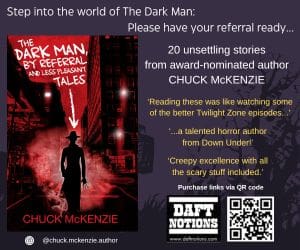Setting Self Doubt on Fire: Reading aloud to an audience

Hi, everyone! I’m back with some more self-doubt fighting advice.
So, what do I have for you today? Well, as you all know, I am part of a writing group, and one of the things we do is read out our stories. This is normally a story or poem that we wrote for our weekly homework. Now, as I’m sure you all know that the thought of reading out your work can be a terrifying prospect. However, even with the fear, every week I have read out my stories, but it has been pointed out that I need to work on how I read out my stories. I tend to speed read, but that wasn’t the only point that was made. Apparently, I don’t show any belief in my stories when I read them out. So I asked myself, “How can I gain confidence to read my stories better?”
After searching on Google, I found some useful advice, and this is what I will be sharing with you today.
So here it is, my list of tips on how to read aloud to an audience:
- Breathe and slow down: I have this issue. I’m so nervous and want to get the story finished as soon as possible that I forget to breathe, and I end up racing through the story. So if, like me, you forget what your lungs are for, then take a breath and then make sure you pace yourself. You need to use the punctuation as a guide to know when you need to stop and breathe. Practicing with a story (piece of writing) that isn’t yours might be a good start.
- Fake it ‘til you make it: Not everyone is born confident, so sometimes you have to pretend until you believe it. Play a character, or choose one of your existing characters, and pretend that it’s the character who is reading your story while you’re safely tucked away out of sight. Alternatively, you could tell yourself that you are confident and that you need to share your story so it can be enjoyed by the world.
- Find a friendly face: It can be scary to look out and see many faces staring up at you, but what could help is if you search for a friendly face(s) in the audience. You know the ones who smile at you, and give you that, ‘It’s okay’ look. Now you shouldn’t focus solely on that person while reading your story (this will creep the person out), but instead when you feel your nerves rising look out for that friendly face.
- Practice your performing voice: The first thing you need to make sure is that your voice is loud enough. You shouldn’t whisper or mumble the story because the audience won’t be able to follow what you are saying. It has been suggested that watching videos of other writers reading out their stories can be helpful for you to find out how to do it, and what could possibly work for you.
- Show some emotion and add action: You do not need to be an actor, but it has been suggested that adding emotion and action to your story, such as giving a different voice for each character, can help bring your story to life. So if, in your story, your character is angry, make sure you put on your angry voice. Some might find this tricky, I know I will, but if you have ever read to a child chances are you have already done it; you just need to do it in front of an audience. To see how you perform, it has been recommended that you video yourself reading out your work, and then you can see which areas you need to work on.
- Imagine the audience are naked: I wouldn’t try this point myself, but apparently by imagining that your audience members are naked it distracts you from the fear of what you are doing. I think I would prefer to imagine that the audience members are giant teddy bears, but it doesn’t matter what you do as long as it works. If you do go down the naked route, try not to allow yourself to get too distracted.
- Practice on a smaller group: This is where writing groups come in handy, especially if you have already built up a good relationship with the other members. However, if you are not part of a writing group, then you should see if your family and friends wouldn’t mind being your pretend audience.
As writers there will be a time, if it hasn’t already happened, where you will need to stand in front of an audience and read out your stories, so it is important that present your story well. However, like everything in life, it will take time. You may mumble your way through now, but with enough practice you will soon be reading out your stories like a professional. You may always feel nervous, but that’s okay, as long as you don’t allow fear to stop you from succeeding.
If you want more tips and advice, I have listed some links for you to explore. I found the third link the most useful.
To end this post, here is another inspirational quote:
“The way to develop self-confidence is to do the thing you fear.” – William Jennings Bryan
Links:
http://www.wikihow.com/Be-Confident-When-Reading-Out-Loud-in-Class
http://www.readin.ca/tips-on-how-to-read-aloud/
- About the Author
- Latest Posts
Nicole J. Simms is a UK horror, crime and fantasy writer. However, she is open to writing in other genres.
Her stories have been published in anthologies, in magazines and on websites. In 2016, she won the Nine Voices’ 50-Word Halloween Competition with her story ‘Meeting the Parents’. And, her self-published e-book The Book of Drabbles is now available to download for free.
She is also the deputy leader of the Oldbury Writing Group, a West Midlands based writing group. They have published a WW2 anthology together titled From Sunrise to Sunset, and they are now working on their second anthology.
Stephen King, Sharon Bolton, J. K. Rowling, R. L. Stine and Kelley Armstrong are some of her favourite authors. And, when she’s not writing, she loves to bake, paint, knit and go on nature walks.
Find out more at:
Website – http://nicole-j-simms.co.uk
Facebook link – https://www.facebook.com/NicoleJSimmsWriter
Twitter link – https://twitter.com/NicoleJSimms1
Goodreads link – https://www.goodreads.com/author/show/19383148.Nicole_J_Simms










